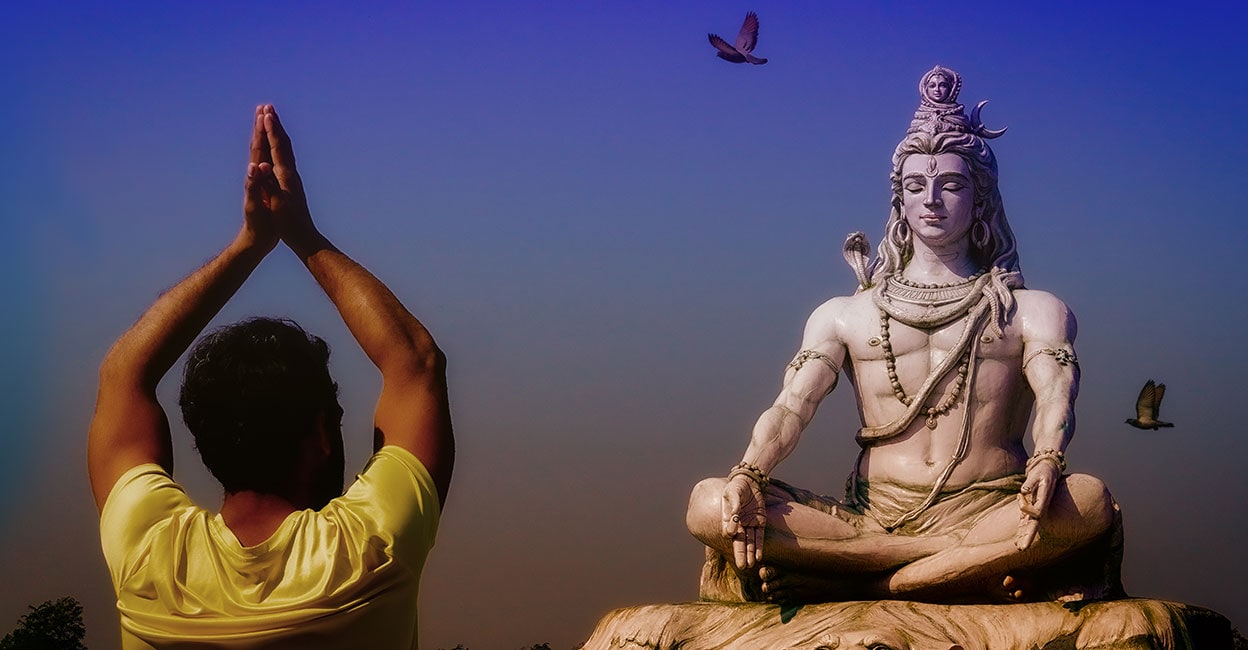All you need to know about Shivaratri – Myths, beliefs and rituals

Shivaratri is observed in the month of Magha as per the Saka Era calendar.
Shivaratri is observed in the month of Magha as per the Saka Era calendar.
Shivaratri is observed in the month of Magha as per the Saka Era calendar.
Spreading the message of divinity, spiritual cleansing and celebrating the virtues of charity and sacrifice, Hindus across the world is all set to observe Maha Shivaratri – the great night of Shiva on Saturday.
Shivaratri is observed in the month of Magha as per the Saka Era calendar. It falls on the midnight of ‘chaturdashi’, which is the day before new moon day. This year’s Shivaratri festival falls on Saturday, February 18.

The literal translation of the word Shivaratri is ‘night of Shiva’. However, it has one more connotation, which is ‘night of Shivam.’ Shivam is another word for ‘mangalam’, which refers to wishing a person everything that is good. In short, Shivaratri could be referred to as ‘Mangalaratri’ too.
According to mythology, it was on the night of Shivaratri that Lord Shiva drank the deadly ‘Kalakooda’ poison to prevent it from falling on earth and destroying everything on the planet. This voluntary act of Shiva not only saved Earth from total destruction but also brought about goodness.
The essence of Shaivite philosophy is ‘Shivoham’ or that Shiva and I are one. This line of thought, which is no different from Advaita philosophy, spreads the message that each and every one among us should be prepared to come forward to save the world from destruction. This is the message of Shivaratri too.
Puranas (ancient Hindu scriptures) such as Shivapuranam and Lingapuranam elaborate on the myths related to Shivaratri and the importance of the rituals observed during the day. Puranas say that observing the fast on the night of Shivaratri would bring devotees ‘bhukti’ or prosperity on earth as well as ‘mukthi’ or salvation.
Mythology says that when Devas (gods) and Asuras (demons) together churned Palazhi (divine ocean), the Kalakoodam poison emerged. As the poison could destroy the world, Lord Shiva grabbed and swallowed it. However, Shiva’s consort Parvathy Devi clasped his neck to prevent the poison from moving any further. Parvathy spent the entire night in this pose, sleepless and praying.
Devotees believe that they can please Shiva by depriving themselves of sleep and offering prayers the entire night, similar to what Parvathy did.
How to observe Shivaratri
The fast should begin on the day before Shivaratri with ‘orikkal’ or having solid food only once. On Shivaratri day, devotees have to wake up early in the morning, perform their ablutions and apply sacred ash (bhasmam) on them while chanting ‘Om Namah Shivaya’. They should then pray at Shiva temple.
A complete fast has to be observed on Shivaratri day. Those who cannot remain without any food can take some offering from temples (nivedyam), tender coconut water or a fruit. An important ritual of the day is charity (daanam) and the most ideal form of ‘daanam’ is ‘annadaanam’ or donating food. Shiva could be pleased also by watering the ‘Koovalam’ tree, which is the Lord’s favourite.
The entire night of Shivaratri has to be spent without even a wink of sleep. On the next morning, devotees can bathe, visit a temple and end the fast by accepting holy water (theertham) from the priest.
Other rituals which are observed by some devotees on Shivaratri day are ‘sayana pradakshinam’ (circumambulating the sanctum sanctorum by rolling through the ground) by men and walking with each step taken by keeping feet touching each other by women, around a Shiva temple.
Devotees consider that prayers at a Shiva temple on Shivaratri day will help absolve them of all sins, including those committed inadvertently. Conducting ‘bali tarpan’ ritual on the day is also believed to please one’s ancestors and help earn their blessings.
